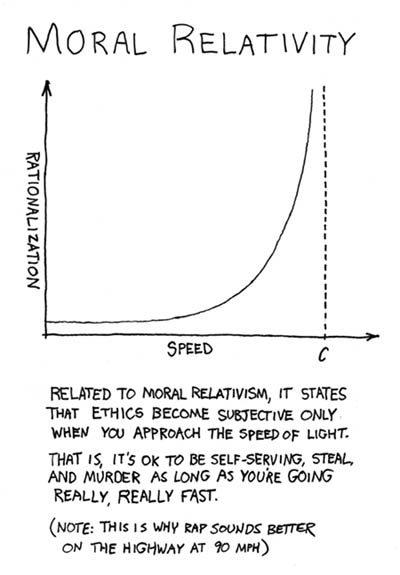The best way to get experience... is to start a startup. So, paradoxically, if you're too inexperienced to start a startup, what you should do is start one. That's a way more efficient cure for inexperience than a normal job. - Paul Graham, Why to Not Not Start a Startup
There is very little you will learn in your current job as a {consultant, lawyer, business person, economist, programmer} that will make you better at starting your own startup. Even if you work at someone else’s startup right now, the rate at which you are learning useful things is way lower than if you were just starting your own. - David Albert, When should you start a startup?This advice almost never comes with citations to research or quantitative data, from which I have concluded:
The sort of person who jumps in and gives advice to the masses without doing a lot of research first generally believes that you should jump in and do things without doing a lot of research first.As readers of this blog know, I don't believe in doing anything without doing a ton of research first, and have therefore come to the surprising conclusion that the best way to start a startup is by doing a lot of background research first.
Specifically, I would make two claims:
- It's unclear whether the average person learns anything from a startup.
- It is clear that the average person learns something working in direct employment, and that they almost certainly will make more money working in direct employment (which can fund their later ventures).
If you want to start a successful startup, you should work in direct employment first.
Evidence
- "We found that among the 24 possible success factors identified in the literature, 8 are homogeneous significant success factors for NTVs [New technology ventures]: ... (6) founders' marketing experience; (7) founders' industry experience... 5 [other factors] were not significant: ... (2) founders' experience with start-ups" Success Factors in New Ventures: A Meta-analysis
- "Human capital variables [measured by things like past startup experience] have limited impact on startup performance, and the few significant effects are split equally between enhancing and impeding performance." Picking winners or building them? Alliance, intellectual, and human capital as selection criteria in venture financing and performance of biotechnology startups.
- "We find that a spell of self-employment is associated with lower hourly wages compared to workers who were consecutively wage-employed. We also show, however,that this effect disappears - and even becomes positive in some settings - for formerly self-employed who find dependent employment in the same sector as their self-employment sector." Is self-employment really a bad experience?: The effects of previous self-employment on subsequent wage-employment wages
- Entrepreneurs don't seem to learn much from their failures: "first-time entrepreneurs have only a 18% chance of succeeding [i.e. have a successful exit] and entrepreneurs who previously failed have a 20% chance of succeeding." Skill vs. luck in entrepreneurship and venture capital: Evidence from serial entrepreneurs.
- "Our most important finding is that the reward to the entrepreneurs who provide the ideas and long hours of hard work in these startups is zero in almost three quarters of [startups], and small on average once idiosyncratic risk is taken into consideration"- The Burden of the Nondiversifiable Risk of Entrepreneurship
Even a stopped clock is right twice a day
It's interesting to think about what exactly the "people don't learn anything from a startup" hypothesis would look like. If we take the above cited numbers of everyone having a 20% chance of succeeding in a given startup, then even if each success is independent most people will have succeeded at least once by their fourth venture.So the underlying message that many in the startup community say of "if you keep at it long enough, eventually you will succeed" is still completely true. I just think you could succeed quicker if you go work for someone else first.
But… Anecdata!
I am sure that there are a lot of people who sucked on their first startup, learned a ton, and then crushed it on their second startup. But those people probably also would've sucked at their first year of direct employment, learned a ton, and then crushed it even more when they did start a company.There are probably people who learn better in a startup environment and you may be one of them, but the odds are against it.
Attribution errors
Subjects read essays for and against Fidel Castro, and were asked to rate the pro-Castro attitudes of the writers. When the subjects believed that the writers freely chose the positions they took (for or against Castro), they naturally rated the people who spoke in favor of Castro as having a more positive attitude towards Castro. However, contradicting Jones and Harris' initial hypothesis, when the subjects were told that the writer's positions were determined by a coin toss, they still rated writers who spoke in favor of Castro as having, on average, a more positive attitude towards Castro than those who spoke against him. In other words, the subjects were unable to properly see the influence of the situational constraints placed upon the writers; they could not refrain from attributing sincere belief to the writers.
VCs... appear to make a common attribution error overemphasizing startups’ human capital when making their investment decisions. - Picking winners or building them? Alliance, intellectual, and human capital as selection criteria in venture financing and performance of biotechnology startupsAnd if venture capitalists, who sole job consists of figuring out which startups will succeed, regularly make these errors then imagine how much worse it must be for the rest of us.
(It also doesn't bode well for this essay – I'm sure that even after reading all the evidence I cited most readers will still attribute their startup heros' success to said heroes' skill, intelligence and perseverance.)
Conclusion
I wrote this because I've become annoyed with the "just do it" mentality of so many entrepreneurs who spout some perversion of Lean Startup methods at me. Yes, doing experiments is awesome but learning from people who have already done those experiments is usually far more efficient. (Academics joke that "a month in the lab can save you an hour in the library.")If you just think a startup will be fun then by all means go ahead and start something from your dorm room. But if you really want to be successful then consider apprenticing yourself to someone else for a couple years first.
(NB: I am the founder of a company which I started after eight years of direct employment.)
Works cited
- Baum, Joel AC, and Brian S. Silverman. "Picking winners or building them? Alliance, intellectual, and human capital as selection criteria in venture financing and performance of biotechnology startups." Journal of business venturing 19.3 (2004): 411-436.
- Gompers, Paul, et al. Skill vs. luck in entrepreneurship and venture capital: Evidence from serial entrepreneurs. No. w12592. National Bureau of Economic Research, 2006.
- Kaiser, Ulrich, and Nikolaj Malchow-Møller. "Is self-employment really a bad experience?: The effects of previous self-employment on subsequent wage-employment wages." Journal of Business Venturing 26.5 (2011): 572-588.
- Song, M., Podoynitsyna, K., Van Der Bij, H. and Halman, J. I. M. (2008), Success Factors in New Ventures: A Meta-analysis. Journal of Product Innovation Management, 25: 7–27. doi: 10.1111/j.1540-5885.2007.00280.x
- Also see Pablo's comment below





